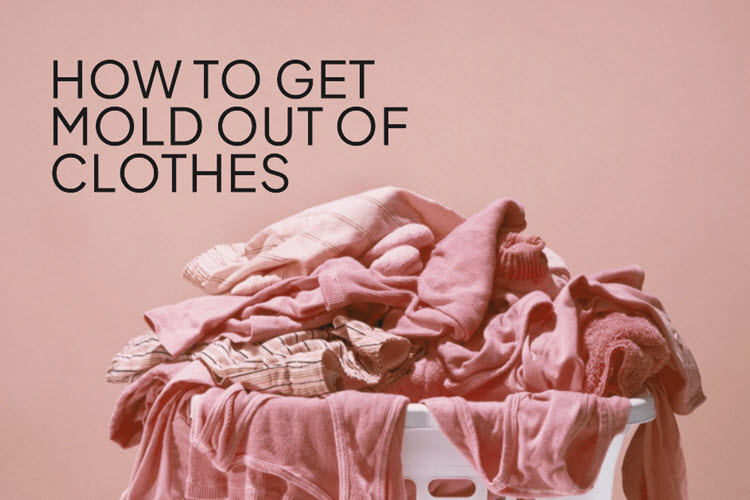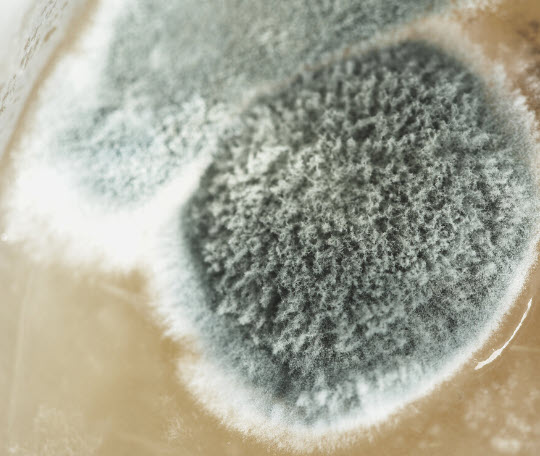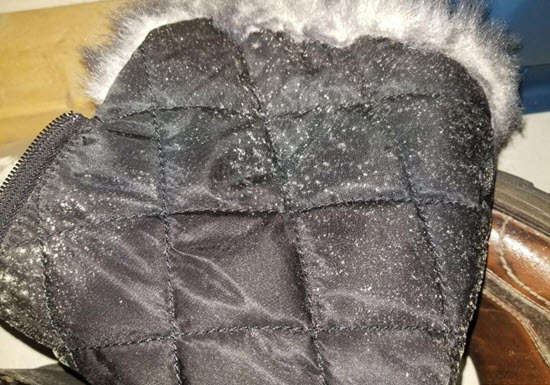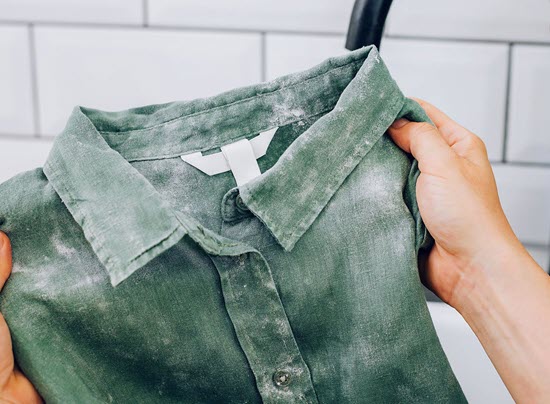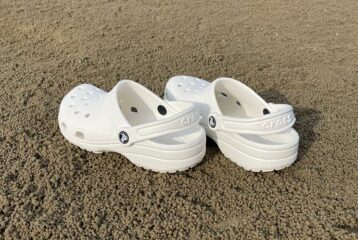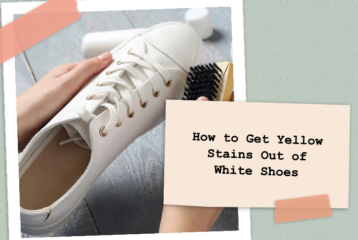Mold can be a pesky problem, not only for your home but also for your clothes. When you discover mold on your garments, it is essential to know how to get mold out of clothes effectively.
Mold usually appears on clothing due to prolonged exposure to moisture, poor ventilation, or storage in damp conditions. It is crucial to remove mold from clothes, as it can cause health issues and damage the fabric.
So many people ask, can you get mold out of clothes? The answer is YES! You can get rid of mold on clothing.
In order to remove mold from clothes, there are three key steps you need to follow. These steps involve:
- Identifying the type of mold
- Using appropriate cleaning solutions
- Taking preventive measures to ensure it does not return
By following these steps, you can maintain the life and integrity of your clothes, and safeguard your health from potential mold-related problems.
Key Takeaways for Removing Mold from Clothes
- It is important to learn how to get mold out of clothes, as mold can damage fabrics and lead to health issues.
- Proper identification and cleaning solutions are necessary for effective mold removal.
- Prevention and aftercare play a crucial role in keeping clothes mold-free in the long run.
In This Article
Mold: What is it, Why Does it Grow?
Mold is a common problem that can affect different items in your home, including your clothes. Knowing how to get mold out of clothes is essential in maintaining hygiene and preventing the spread of mold-related health problems. It is helpful to have a basic understanding of mold and how it grows.
Mold refers to several types of fungi that grow in moist and humid conditions. These fungi reproduce by releasing spores, which can latch onto various surfaces, like walls, ceilings, and clothes.
When mold grows on clothes, it feeds on the fabric and can cause stains, unpleasant odors, and even weaken the material over time. To effectively get rid of mold from your clothes, you need to consider the type of fabric, the extent of the mold growth, and the colorfastness of the clothing item.
Here are some practical steps to follow:
- Act quickly: The sooner you address mold on your clothes, the easier it will be to remove it. Mold can spread and become more stubborn over time, making it challenging to eliminate.
- Inspect the fabric: Determine the type of fabric you are dealing with, as some materials require unique cleaning methods. For instance, delicate fabrics like silk may need a more gentle approach.
- Choose the right cleaning solution: Depending on the fabric type and mold severity, you can use different cleaning agents such as vinegar, baking soda, or bleach. It is crucial to follow the instructions on your garment’s care label to prevent damage.
- Wash and dry: After treating the mold-affected area, wash your clothes using warm water and an appropriate detergent. Make sure to dry them completely to prevent further mold growth. Sometimes, mold-affected clothes might need multiple cleaning cycles for the mold to be fully removed.
Keep in mind that mold growth could signify a more significant issue, such as water damage or high humidity levels at your home. Addressing the root cause and maintaining a clean environment can help prevent recurrent mold issues in the future.
Remember, knowing how to get mold out of clothes is essential, but prevention is always better than cure.
If you get mold in your rugs, check out How to Get Mold Out of Carpet.
What Causes of Mold in Clothes?
Learning how to get mold out of clothes is essential for maintaining a clean and healthy wardrobe. There are a few factors that contribute to the growth of mold on your clothing. Understanding these factors can help you in preventing mold from taking over your clothes in the future.
- Dampness: Firstly, dampness and humidity play a significant role in mold growth. When you store your clothes in a damp or humid environment, such as a basement or a poorly ventilated closet, mold spores can easily find their way onto your clothing and start to multiply. This is especially true if you store your clothes while still damp, such as after washing or being caught in the rain.
- Organic Materials: Another factor that contributes to mold growth on clothes is the presence of organic materials. Mold thrives on these materials as a food source. So if you have food stains, sweat or dirt on your clothes, mold will have an easier time growing. Also, if you’re not washing your clothes regularly, these organic materials accumulate, increasing the likelihood of mold growth.
- Poor Storage: Lastly, poor storage practices can also lead to the growth of mold on clothes. This includes overcrowding your closet and not allowing proper air circulation. When your clothes are packed close together, it creates pockets of trapped moisture and warmth, providing the ideal environment for mold growth.
Keeping your clothes dry, clean, and well-circulated will help prevent mold growth and the need to learn how to get mold out of clothes. Always ensure proper storage and avoid damp environments to help maintain a mold-free wardrobe.
How Moldy Clothes Impact Your Health
Wearing moldy clothes or storing moldy items in your living space can have negative consequences for your health. Mold exposure can cause a range of symptoms, such as nasal stuffiness, throat irritation, coughing, and wheezing, which can lead to respiratory issues. If you have with mold allergies or asthma, you may be particularly susceptible to these symptoms.
To protect yourself from the potential health effects of mold, it’s essential to know how to get mold out of clothes.
- Start by removing visible mold using a brush or cloth.
- Then, wash your clothes with detergent and bleach, if the fabric can tolerate it.
- Be sure to dry your clothes thoroughly to prevent any lingering moisture from promoting mold growth.
Regularly inspecting and cleaning your living space and adequately maintaining your clothes are crucial steps in avoiding any long-term health effects associated with mold exposure. Remember to keep your home well-ventilated and use a dehumidifier if necessary to maintain optimal humidity levels.
Ultimately, staying proactive in your efforts to minimize mold growth and knowing how to get mold out of clothes will help protect your well-being and maintain a healthy home environment.
How to Identify Mold on Clothes
Before learning how to get mold out of clothes, it is essential to identify mold on them. Mold can appear as fuzzy spots in different colors, such as black, gray, white, or green. These spots might also give off a musty or unpleasant smell. Here are some recommendations to spot mold on clothes:
- Examine your clothes closely: Look for any discoloration or fuzzy patches, especially in areas that are often damp, such as cuffs, collars, and underarms.
- Sniff test: If you notice a persistent musty odor on your clothes, it might be an indication of mold growth.
- Check your storage: Mold can proliferate in damp and dark places. Inspect your wardrobe, closet, or any other storage area for signs of mold growth or moisture, as it could transfer to your clothes.
Mold exposure can have negative health effects, so it’s crucial to address this issue as soon as possible to keep you and your belongings safe.
How to Prevent Mold Growth
When dealing with the issue of how to get mold out of clothes, it’s essential to focus on preventing mold growth in the first place. Mold thrives in damp and humid environments, so by maintaining proper moisture control and air circulation in your home, you can effectively reduce the risk of mold growth on clothing.
To prevent mold from growing on your clothes, follow these recommendations:
- Ensure that your clothes are always clean and dry before storing them. Wet or damp clothes are more susceptible to mold growth. After washing, make sure they are dried completely either in the sun or using a dryer.
- Maintain a relative humidity level of 40-60% in your living spaces. You can invest in a humidity meter or a dehumidifier to help you achieve the desired humidity levels. Ensure proper air circulation by opening windows or installing exhaust fans, particularly in areas like the laundry room, basement, or any damp areas where mold is more likely to grow.
- Store clothes in a well-ventilated and dry area. Avoid overcrowding your wardrobe as this can limit air circulation, leading to a damp environment conducive to mold growth. You can use moisture-absorbing products such as silica gel packets in your closet to minimize moisture levels.
Regularly cleaning your wardrobe, dresser, or drawers with a mold-resistant cleaner can also play a crucial role in mold prevention. This is particularly important if your living space has experienced water damage or leaks, as those provide an ideal breeding ground for mold.
5 Proven Methods to Remove Mold
Mold on clothes can not only damage the fabric but also affect your health. In this step-by-step guide, you will learn how to get mold out of clothes using various methods.
1. Gentle Hand Washing
- Fill a basin with warm water and add a few drops of mild detergent.
- Immerse the affected garment in the soapy water.
- Gently rub the moldy areas with your fingers, making sure not to damage the fabric.
- Rinse the garment with clean water and squeeze out excess water.
- Lay the garment flat on a clean towel and let it air dry.
2. Use of Bleach
Important note: Only use bleach on white or colorfast fabrics. Test in an inconspicuous area before proceeding.
- Fill a basin with warm water, and add 1/4 cup of bleach per gallon of water.
- Soak the garment in the bleach solution for 15 minutes.
- Rinse the garment with cold water, and then wash it normally in the washing machine.
- Allow the garment to air dry in a well-ventilated area.
Note: if you do end up staining your clothes, check out How to Get Bleach Out of Clothes
3. Use of Vinegar
- Add one cup of white vinegar to your washing machine, along with your regular detergent.
- Wash the moldy garment using a normal cycle.
- Air dry the garment in a well-ventilated area.
4. Use of Baking Soda
- Fill a basin with warm water, and add 1/2 cup of baking soda.
- Soak the garment in the baking soda solution for a few hours.
- Wash the garment in the washing machine with your regular detergent.
- Allow the garment to air dry.
5. Dry Cleaning
Some fabrics and garments may require professional cleaning. If a mold problem persists after trying the above methods, or if the garment’s care label indicates it should be professionally cleaned, take the garment to a dry cleaner who specializes in mold removal.
Aftercare and Maintenance to Prevent Mold
Routine care of Clothing
In order to prevent mold growth on your clothes and ensure they stay clean, it’s important to follow some routine care steps.
- Make sure to wash your clothes regularly, using a detergent that effectively removes dirt, sweat, and bacteria.
- When washing clothes that have been exposed to damp environments or have mold stains, consider using a mold killing laundry detergent or adding a cup of white vinegar to the wash cycle.
- After washing, promptly dry your clothes thoroughly.
- Avoid leaving damp clothes in the washing machine or piled up in a laundry basket, as this will create a breeding ground for mold.
- If possible, hang your clothes to dry outside in the sunlight, as sunlight helps prevent mold growth.
Clothing Storage
Proper storage can also play a key role in preventing mold from developing on your clothes. Before storing your clothes, ensure they are completely dry to prevent humid conditions within your closet or drawers. Invest in a dehumidifier if you live in a humid environment to maintain a dry atmosphere within your living space.
Organize your clothes in a way that allows air to circulate around them. This can be achieved by:
- Using non-slatted hangers instead of tightly packed wire hangers
- Keeping a reasonable distance between hanging clothes
- Storing off-season clothing in breathable fabric storage bags rather than plastic containers
Make sure to maintain a clean and dry storage area for your clothes. Regularly wipe down closet walls and surfaces, and vacuum or sweep the floor to eliminate dust and moisture.
By following these aftercare and maintenance tips, you can prevent mold growth and keep your clothes free from mold stains and odors, making it easier to tackle the issue of how to get mold out of clothes.
Frequently Asked Questions
- Mix equal parts water and white vinegar in a spray bottle.
- Spray the solution onto the mold-stained area of the fabric.
- Let it sit for 15-20 minutes to break down the mold.
- Use a soft brush to scrub the mold and the surrounding area.
- Wash the clothing as normal, and air dry it in sunlight if possible.
Vinegar is a natural and effective way to combat mold, making it a great option for how to get mold out of clothes.
Besides the health concerns, mold can also damage the fabric and leave a musty odor on your clothes. It is essential to address mold stains promptly to protect your health and the integrity of your clothing.
- Before washing, brush off any visible mold outdoors to prevent it from spreading indoors.
- Then wash the affected clothes using hot water and a detergent with mold-killing properties, such as borax.
- Alternatively, you can add a cup of white vinegar or bleach to the wash cycle alongside your regular detergent.
However, be cautious about using bleach on delicate or colored fabrics, as it may cause damage.
If you come across black mold on your clothes, it is essential to handle it carefully and dispose of it as soon as possible to minimize health risks.
Additionally, allowing your clothes to dry in direct sunlight can help kill any remaining mold spores. However, if the mold has significantly damaged the fabric or caused it to fall apart, it may be best to dispose of the clothing item.
It is important first to wash and treat the moldy clothes using techniques like vinegar, borax, or bleach. After treating and washing the clothes, using a dryer may help prevent the regrowth of mold by completely drying the fabric.
Final Thoughts on How to Get Mold Out of Clothes
In conclusion, effectively removing mold from your clothes is essential to maintain their quality and your health. By following the steps discussed, you should feel confident in your ability and how to get mold out of clothes.
To recap, how to get mold our of clothes:
- Always ensure you’re wearing protective gear when dealing with mold-infested clothing, such as gloves and a mask.
- Next, pre-treat the affected garments by brushing off the mold outside, away from your living space.
- Then, use a suitable mold-killing solution or detergent to treat the clothes before you put them in the washing machine.
With proper ventilation and frequent cleaning of your living space, you can effectively prevent mold growth and protect your clothes. Finally, remember that it is crucial to act promptly when you discover mold on your garments to ensure successful removal and prevent the problem from escalating.
By understanding how to get mold out of clothes, you’re taking an important step toward maintaining a healthy and comfortable environment for yourself and your loved ones. Stay vigilant, keep your space clean and dry, and always address mold issues as soon as you spot them.
